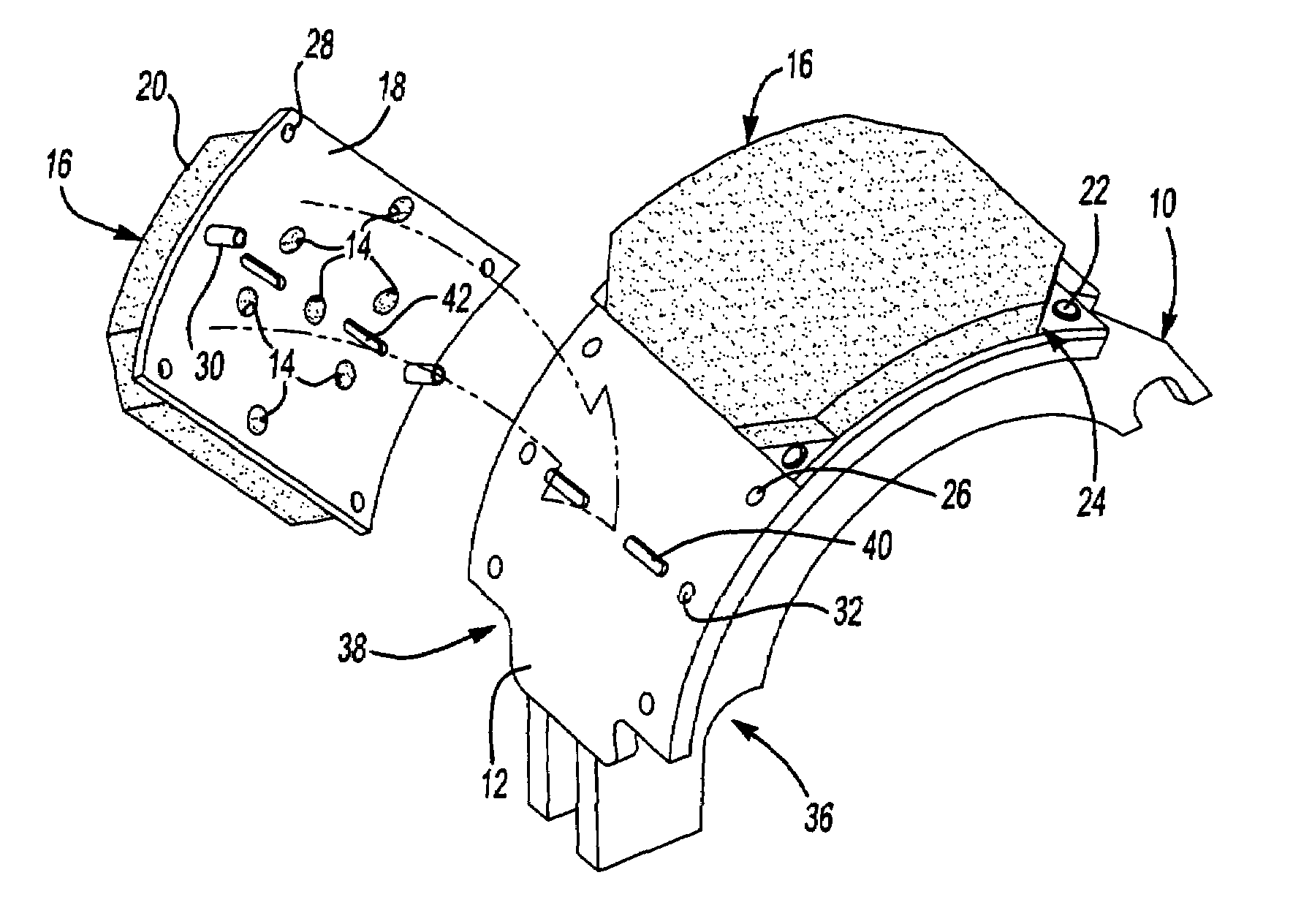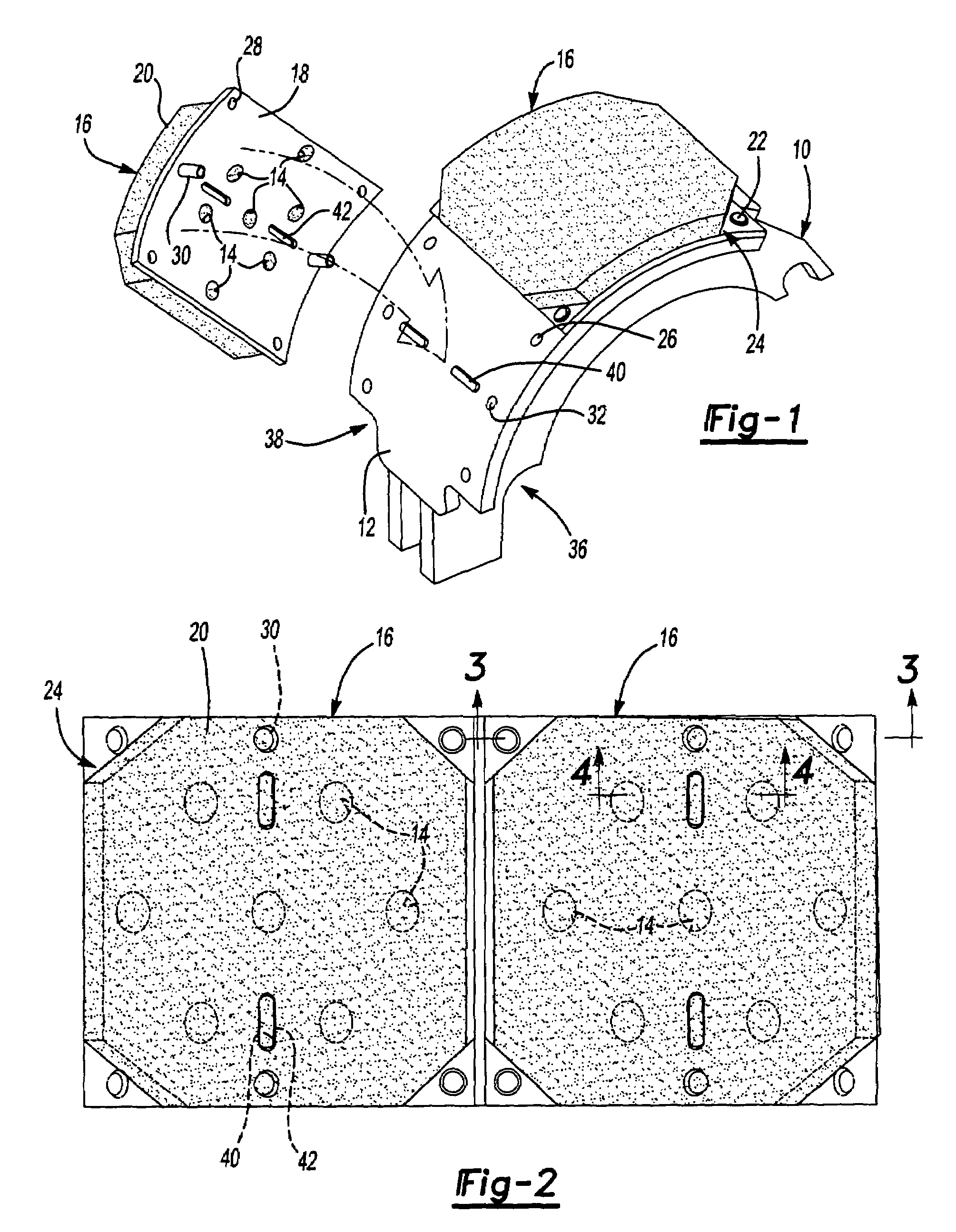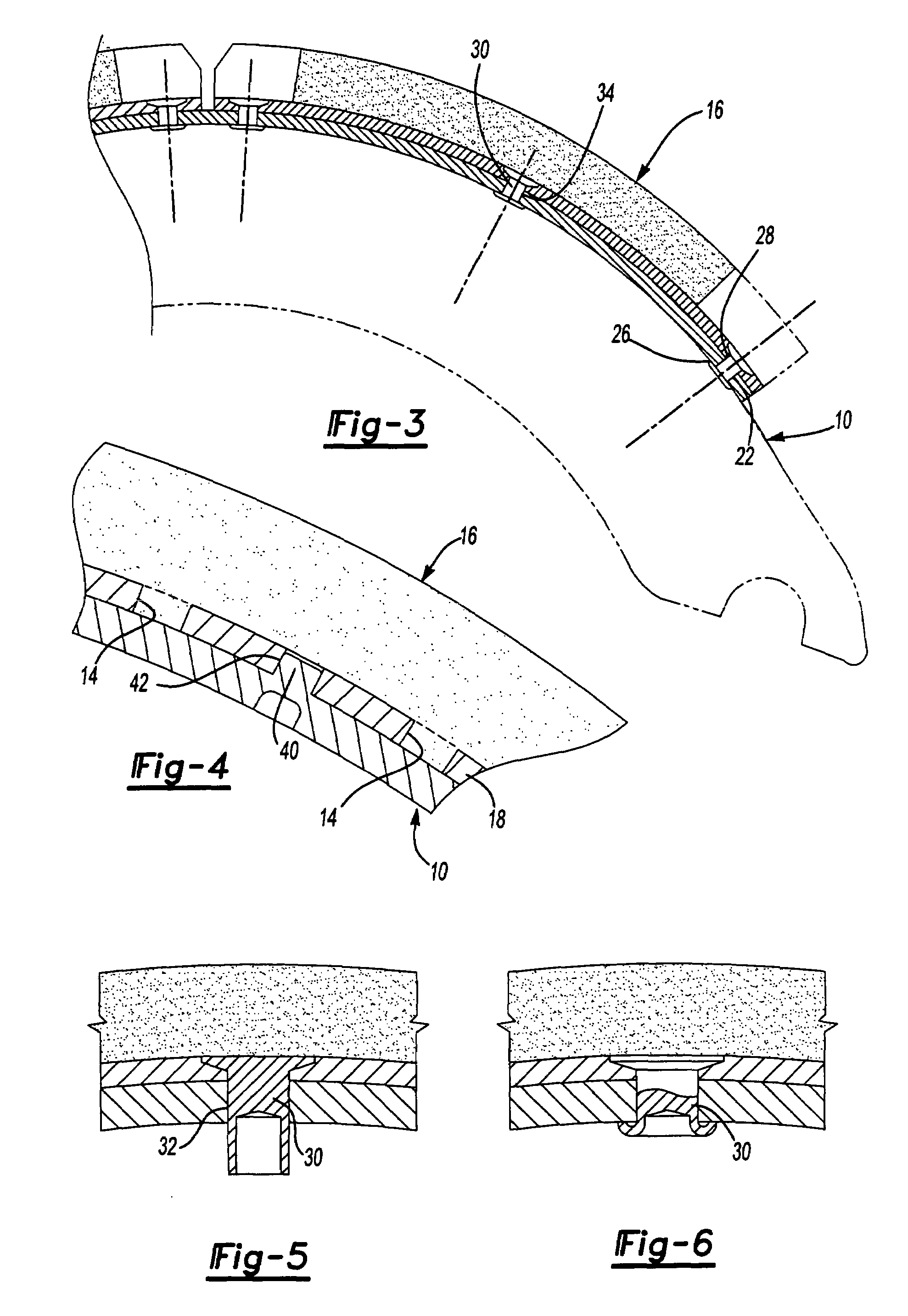Brake shoe and brake lining blocks with keyed connection
a technology of brake shoes and lining blocks, which is applied in the direction of friction lining, brake components, mechanical equipment, etc., can solve the problems of brake block cracking, braking performance and durability problems, and the lining after fastening to the shoe may crack or break off, so as to increase the resistance to shear forces
- Summary
- Abstract
- Description
- Claims
- Application Information
AI Technical Summary
Benefits of technology
Problems solved by technology
Method used
Image
Examples
Embodiment Construction
)
[0026]Referring to FIG. 1, a brake shoe 10 having a cylindrical outer surface 12 is illustrated with one brake plate 16 assembled to the cylindrical outer surface 12 and a second brake plate 16 that is shown unattached to the brake shoe 10. Each of the brake plates 16 includes a backing plate 18 to which is bonded a layer of friction material 20. A plurality of apertures 14 are provided in the backing plate 18 into which friction material 20 is integrally molded to mechanically attach the friction material 20 to the backing plate 18.
[0027]The brake plates 16 are attached, in part, by rivets 22 that are secured to the backing plate 18 at open corners 24. The open corners 24 are areas where no friction material 20 is bonded to the backing plate 18. Alternatively, the layer of friction material 20 could be applied over the entire backing plate 18 and then subsequently removed by cutting away or milling the friction material to create the open corners 24. Holes 26 for receiving the riv...
PUM
 Login to View More
Login to View More Abstract
Description
Claims
Application Information
 Login to View More
Login to View More - R&D
- Intellectual Property
- Life Sciences
- Materials
- Tech Scout
- Unparalleled Data Quality
- Higher Quality Content
- 60% Fewer Hallucinations
Browse by: Latest US Patents, China's latest patents, Technical Efficacy Thesaurus, Application Domain, Technology Topic, Popular Technical Reports.
© 2025 PatSnap. All rights reserved.Legal|Privacy policy|Modern Slavery Act Transparency Statement|Sitemap|About US| Contact US: help@patsnap.com



